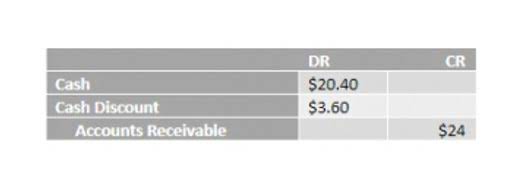
The balance here is between having enough inventory to meet customer needs and not miss out on any sales, versus having too much money tied up in inventory. Such companies are considered to have poor liquidity, meaning they’re financially weak. A company in this situation would need to sell a larger asset, such as equipment or property, if they suddenly needed to pay a debt. In the worst-case scenario, the company may need to declare bankruptcy. This means the company has $150,000 available, indicating it has the ability to fund its short-term obligations. Unlike working capital, cash flow doesn’t reveal how effectively you’re managing your finances or how much leeway you’ll have if you run into problems with your supply chain, for example.
How NWC is Calculated
Put simply, this indicates that the company would be able to access enough cash to cover its short-term needs. Working capital is calculated by deducting current liabilities from current assets. The numbers needed for the calculation can be found on a company’s balance sheet or on stock data websites. The working capital ratio formula measures a company’s short-term liquidity.

Importance of Free Cash Flow
That’s why many people recommend having a ratio between 1.2 and 2.0 to give yourself a cash cushion for unexpected cash needs. The net working capital formula is a rough estimate of whether you will receive enough cash in the next year to pay what you owe in the next year. That’s why it’s used by lenders to determine whether you are financially healthy enough to receive a loan.
What is negative working capital?

The businesses with stronger working capital have enough cash cushion to seed further growth and expansion. A positive working capital ratio indicates the business is well-positioned to pay its short-term debts and invest further. While a negative working capital reflects the financial difficulties of the business to settle its short-term debts and on the verge of closure if the trends continue for a longer time. This allows you to calculate your net working capital, which is an indication of the solvency of a business. The net working capital ratio measures the percentage of a company’s current assets to its short-term liabilities. A company can improve its working capital by increasing current assets and reducing short-term debts.

ABC Company generally holds cash of $1 million and receivables of $1.5 million. Its payables total $500,000, and the company holds current debt of $300,000. In this example, the company’s net working capital is $2 million (cash of $1MM + receivables of $1.5MM – payables of $0.5MM). On a cash-free, debt-free basis, the company holds $1 million of net working capital. Most business owners understand the concept of an earnings multiple or an income-based approach to valuing their operating company.
- Anything higher could indicate that a company isn’t making good use of its current assets.
- If you aren’t keen on ticking sounds at your meetings, then it pays to educate yourself on the concept of NWC, and to take the advice outlined in this article when it comes to preparing your business for sale.
- Business owners can optimize cash flow, improve short-term liquidity, and reduce working capital by optimizing three primary areas – inventory, receivables, and payables.
- Working capital is a measure of a company’s liquidity, specifically its short-term financial health and whether it has the cash on hand for normal business operations.
- An increase in the balance of an operating asset represents an outflow of cash – however, an increase in an operating liability represents an inflow of cash (and vice versa).
Also known as its net working capital, this money is only considered to be available when it’s in excess of what the company currently owes in terms of debt. For illustrative purposes, we’ll assume the company recognized $5 million in depreciation and amortization (D&A) on the cash flow statement (CFS). Therefore, to calculate free cash flow to firm (FCFF) starting from EBITDA, the first step is to deduct D&A from EBITDA to arrive at operating income (EBIT). However, despite its widespread use, EBITDA receives criticism for portraying an inaccurate and potentially misleading representation of a company’s cash flow profile (and profitability). The net income (or the “bottom line”) is the accounting profitability of a company, inclusive of operating and non-operating expenses and non-operating income. Non-GAAP measures are not permitted to be reported on a company’s financial statements filed with the Securities and Exchange Committee (SEC).
- However, consistent negative working capital may lead to cash flow issues and hinder growth.
- If you can speed up your cash inflows, you can make timely payments and maintain a sufficient cash balance.
- If a customer pays late on every sale, consider whether you should do business with the client moving forward.
- When it comes to the concept of net working capital, such details can become a ticking time bomb, set to explode even months after closing.
- Working capital can also be analyzed on a historical basis as a percentage of revenue.
You should take into consideration limitations and other ratios when determining the overall financial position of your business. The working capital formula subtracts your current liabilities (what you owe) from your current assets (what you have) in order to measure available funds for operations and growth. A positive number nwc equation means you have enough cash to cover short-term expenses and debts, whereas a negative number means you’re struggling to make ends meet. It reflects the fluctuations in a company’s short-term assets and liabilities. It shows how efficiently a company manages its current resources, such as cash, inventory, and accounts payable.
- If a payment isn’t time-critical and won’t impact operations immediately, then these may be able to be pushed back to a later date to increase the working net capital.
- A company in this situation would need to sell a larger asset, such as equipment or property, if they suddenly needed to pay a debt.
- Working Capital, on the other hand, represents the total funds available for daily operations and is calculated by subtracting current liabilities from total current assets.
- Knowing your NWC can also provide some reassurance that should something catastrophic happen, you have enough short-term assets available to use for emergencies.
- This formula, simply, represents the ratio between a business’s current assets and its current liabilities.
How to Calculate Operating Working Capital (OWC)
